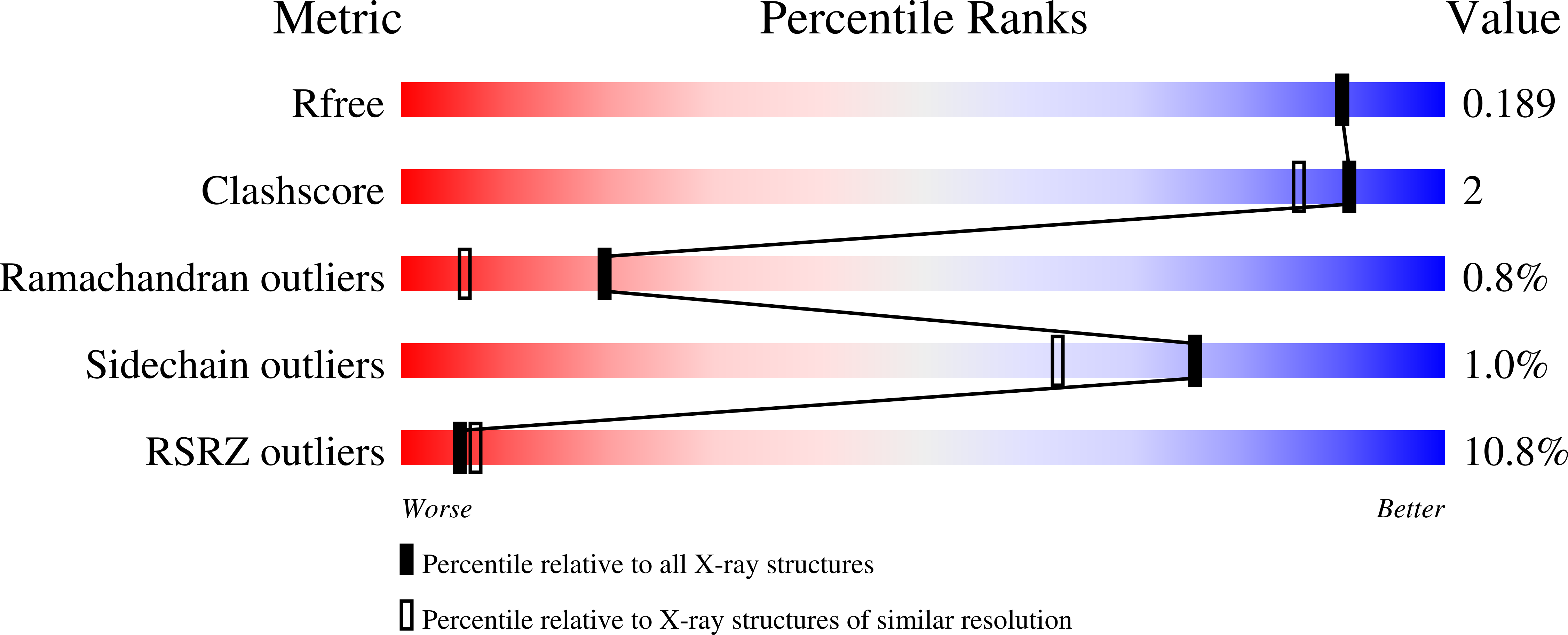Amylose recognition and ring-size determination of amylomaltase.
Roth, C., Weizenmann, N., Bexten, N., Saenger, W., Zimmermann, W., Maier, T., Strater, N.(2017) Sci Adv 3: e1601386-e1601386
- PubMed: 28097217
- DOI: https://doi.org/10.1126/sciadv.1601386
- Primary Citation of Related Structures:
5JIW - PubMed Abstract:
Starch is a major carbon and energy source throughout all kingdoms of life. It consists of two carbohydrate polymers, branched amylopectin and linear amylose, which are sparingly soluble in water. Hence, the enzymatic breakdown by glycoside hydrolases (GHs) is of great biological and societal importance. Amylomaltases (AMs) are GHs specialized in the hydrolysis of α-1,4-linked sugar chains such as amylose. They are able to catalyze an intramolecular transglycosylation of a bound sugar chain yielding polymeric sugar rings, the cycloamyloses (CAs), consisting of 20 to 100 glucose units. Despite a wealth of data on short oligosaccharide binding to GHs, no structural evidence is available for their interaction with polymeric substrates that better represent the natural polysaccharide. We have determined the crystal structure of Thermus aquaticus AM in complex with a 34-meric CA-one of the largest carbohydrates resolved by x-ray crystallography and a mimic of the natural polymeric amylose substrate. In total, 15 glucose residues interact with the protein in an extended crevice with a length of more than 40 Å. A modified succinimide, derived from aspartate, mediates protein-sugar interactions, suggesting a biological role for this nonstandard amino acid. The structure, together with functional assays, provides unique insights into the interaction of GHs with their polymeric substrate and reveals a molecular ruler mechanism for minimal ring-size determination of CA products.
Organizational Affiliation:
Institut für Bioanalytische Chemie, Universität Leipzig, Deutscher Platz 5, 04103 Leipzig, Germany.; Department of Chemistry, University of York, Heslington, York, YO10 5DD, U.K.






















